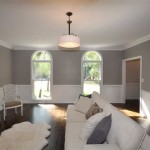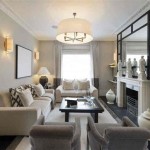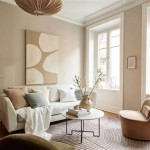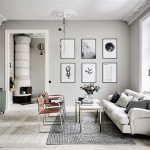Navigating the Nomenclature: Names of Living Room Furniture
The living room, often considered the heart of the home, serves as a central gathering space for relaxation, entertainment, and social interaction. Furnishing this crucial area requires careful consideration of both aesthetics and functionality. Understanding the common names and diverse categories of living room furniture is essential for effective planning, shopping, and communication with interior designers or furniture retailers. This article provides a comprehensive overview of the names and classifications of various living room furniture pieces.
Seating Arrangements: Sofas, Loveseats, and Chairs
Seating is arguably the most critical element in any living room design. It dictates comfort levels, accommodates multiple occupants, and significantly influences the overall style of the space. The term "seating" encompasses a broad range of furniture pieces, each serving a specific purpose and catering to different spatial needs.
The sofa, also known as a couch, is a large upholstered seat typically designed to accommodate multiple people. Sofas come in various configurations and styles, including the classic three-seater sofa, the sectional sofa, and the sleeper sofa. The size and shape of a sofa significantly impact the room's layout and overall ambiance.
Sectional sofas are modular pieces of furniture that can be arranged in various configurations. They are particularly well-suited for larger living rooms and offer a highly customizable seating solution. Common sectional configurations include L-shaped, U-shaped, and curved designs. The individual components of a sectional often include armless chairs, corner chairs, and ottomans, providing flexibility in arrangement and usage.
A loveseat is a smaller version of a sofa, typically designed to seat two people comfortably. Loveseats are ideal for smaller living rooms or as supplementary seating in larger spaces. They offer a more intimate seating experience compared to larger sofas and can be easily incorporated into diverse design schemes.
Chairs represent a diverse category of seating options, including armchairs, accent chairs, recliners, and rocking chairs. Armchairs provide comfortable seating for one person and often feature armrests for added support. Accent chairs are primarily chosen for their aesthetic appeal and can serve as focal points within the room. They come in a wide array of styles, from traditional wingback chairs to modern minimalist designs.
Recliners are designed for maximum comfort and relaxation, featuring adjustable backrests and footrests. They are often upholstered in plush fabrics and may include additional features such as massage functions and built-in cup holders. Rocking chairs offer a gentle rocking motion that can be soothing and relaxing. They are commonly used in nurseries or as a comfortable seating option in living rooms with a more traditional aesthetic.
Beyond these core categories, specialized seating options exist, such as chaise lounges, which offer a reclining position for individual relaxation, and benches, which can provide both seating and storage solutions.
Tables: Coffee Tables, End Tables, and Console Tables
Tables are essential for providing functional surfaces within the living room. They serve as platforms for beverages, books, decorative items, and other necessities. Different types of tables cater to specific needs and placement within the room. Understanding the distinctions between these table types is crucial for creating a well-organized and visually appealing living space.
The coffee table is typically positioned in the center of the seating area, providing a convenient surface for placing drinks, snacks, and reading materials. Coffee tables come in various shapes, sizes, and materials, including rectangular, square, round, and oval designs. The height of a coffee table should generally be similar to the height of the sofa cushions for optimal accessibility.
End tables, also known as side tables, are placed beside sofas or chairs, providing a convenient surface for lamps, books, and other personal items. End tables are typically smaller than coffee tables and can be used to balance the visual weight of the seating arrangement. They also act as a surface for beverages, lamps, or decorative items without requiring individuals to leave the comfort of their seating.
Console tables are long, narrow tables typically placed against a wall or behind a sofa. They serve as a decorative element and can provide additional storage space. Console tables often feature drawers or shelves for storing items such as keys, mail, or decorative accessories. They can also be used to display artwork, plants, or other decorative objects.
In addition to these standard table types, specialized tables exist, such as nesting tables, which offer a space-saving solution for smaller living rooms, and drum tables, which feature a cylindrical shape and often incorporate storage compartments.
Storage and Display: Entertainment Centers, Bookcases, and Shelves
Storage and display furniture plays a crucial role in organizing and showcasing personal belongings within the living room. These pieces help to minimize clutter, create a sense of order, and add visual interest to the space. The selection of appropriate storage and display furniture depends on individual needs, available space, and desired aesthetic.
Entertainment centers are designed to house electronic equipment such as televisions, DVD players, and gaming consoles. Modern entertainment centers often incorporate storage compartments for media collections, remotes, and other accessories. They come in various styles and sizes, ranging from simple stands to elaborate wall units. The design of the entertainment center should complement the overall aesthetic of the living room.
Bookcases provide dedicated storage for books and other reading materials. They come in various sizes and styles, from tall, narrow bookcases to wide, low bookcases. Bookcases can also be used to display decorative objects, photographs, and collectibles, adding a personal touch to the living room. The arrangement of books and objects within a bookcase can significantly impact the visual appeal of the space.
Shelves offer a versatile storage and display solution that can be customized to fit specific needs. Shelves can be mounted on walls, integrated into existing furniture pieces, or used as freestanding units. They are ideal for displaying artwork, plants, and other decorative items. Shelves can be made from a variety of materials, including wood, metal, and glass.
Other storage and display options include sideboards, which offer concealed storage for linens, dishes, and other items, and display cabinets, which feature glass doors for showcasing valuable collectibles. The careful selection and arrangement of storage and display furniture can transform a cluttered living room into an organized and visually appealing space.
Beyond these primary categories, several other furniture pieces may be incorporated into the living room, depending on individual preferences and needs. These include ottomans, which can serve as footrests or additional seating, room dividers, which can create separate zones within a larger space, and fireplaces, which serve as a focal point for the room and provide warmth and ambiance.
Selecting the appropriate living room furniture requires careful consideration of several factors, including the size and shape of the room, the desired aesthetic, and the individual needs of the occupants. A well-planned living room should incorporate a balance of seating, tables, and storage, creating a comfortable and functional space that reflects personal style.
The placement of furniture is also a crucial element in creating a harmonious living room. Consider the flow of traffic within the room and ensure that furniture is arranged in a way that facilitates easy movement. Create a focal point, such as a fireplace or television, and arrange furniture around it to encourage conversation and interaction.
The choice of materials and colors can significantly impact the overall ambiance of the living room. Opt for durable and comfortable materials that are appropriate for the intended use of the furniture. Select colors that complement the existing decor and create the desired mood, whether it is a relaxing and calming atmosphere or a vibrant and energetic space.
In conclusion, a thorough understanding of the names and categories of living room furniture is essential for creating a functional, aesthetically pleasing, and comfortable space. By carefully considering individual needs, spatial constraints, and design preferences, it is possible to create a living room that serves as the heart of the home.
Types Of Living Room Furniture

Living Room Furniture Useful List Of 60 Objects In The
Types Of Living Room Furniture

Modern Living Room Furniture Ideas Birchwood

Selecting The Best Furniture For Small Living Rooms Amish Factory

1 Living Room Furniture Download Table

Living Room Furniture Names With Pictures 7esl

Furniture Name In English With Pictures

Types Of Living Room Furniture

Living Room Vocabulary Objects Furniture Names In English A Plus Topper








